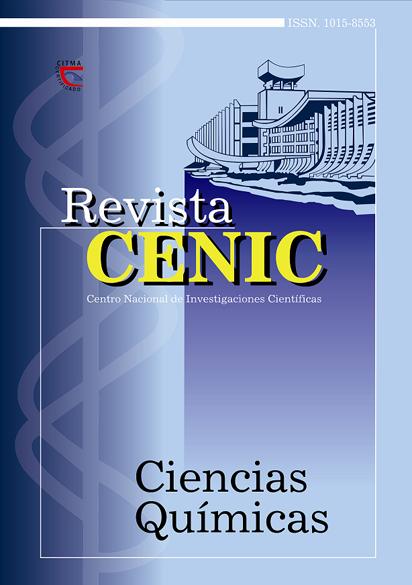Determination of Crude Oil Fractions using simulated distillation by gas chromatography as an alternative method
Abstract
In the oil industry it is very important to know the composition of the crude oil fractions, since it varies
depending on their origin. It is feasible and profitable their industrial separation by distillation in fractions of different
boiling points intervals for dissimilar applications, but before carrying out the industrial process it is necessary to determine
in the laboratory the composition of each fraction for the adaptation of this purpose. Usually this is implemented
by distillation at atmospheric and reduced pressures of the oil samples, although this determination could be made by
simulated distillation using gas chromatography. A method of gas chromatography simulated distillation was established
in order to its future application in Cuban refinery laboratories. It was performed using capillary gas chromatography with
flame ionization detector. The test method consisted on a modification of the standard ASTM D5307-07 which establishes
the use of packed columns, which were substituted by capillary columns. The samples were analyzed using a mixture of
n-paraffins as internal standard (n-hexadecane, n-heptadecane, n-octadecane and n-nonadecane.). The tests of column
resolution, determinations of the response factors and retention times repeatability were carried out. The statistical
analysis shows good results in the repeatability and reproducibility tests. The composition of the different fractions of a
number of samples of oil was obtained and they were compared with the results obtained by the classical method of True
Boiling Points ASTM D 2892-05, being similar in both methods. It can be concluded that this method is possible to implant

Downloads
Published
How to Cite
Issue
Section
License

This work is licensed under a Creative Commons Attribution-NonCommercial-ShareAlike 4.0 International License.
Los autores que publican en esta revista están de acuerdo con los siguientes términos:
Los autores conservan los derechos de autor y garantizan a la revista el derecho de ser la primera publicación del trabajo al igual que licenciado bajo una Creative Commons Atribución-NoComercial-CompartirIgual 4.0 que permite a otros compartir el trabajo con un reconocimiento de la autoría del trabajo y la publicación inicial en esta revista.
Los autores pueden establecer por separado acuerdos adicionales para la distribución no exclusiva de la versión de la obra publicada en la revista (por ejemplo, situarlo en un repositorio institucional o publicarlo en un libro), con un reconocimiento de su publicación inicial en esta revista.
Se permite y se anima a los autores a difundir sus trabajos electrónicamente (por ejemplo, en repositorios institucionales o en su propio sitio web) antes y durante el proceso de envío, ya que puede dar lugar a intercambios productivos, así como a una citación más temprana y mayor de los trabajos publicados (Véase The Effect of Open Access) (en inglés).













